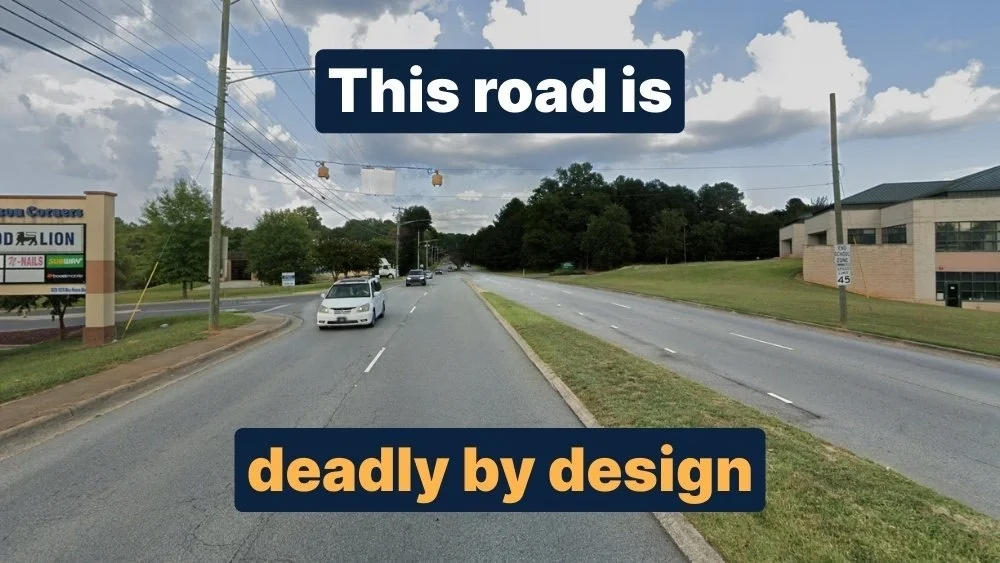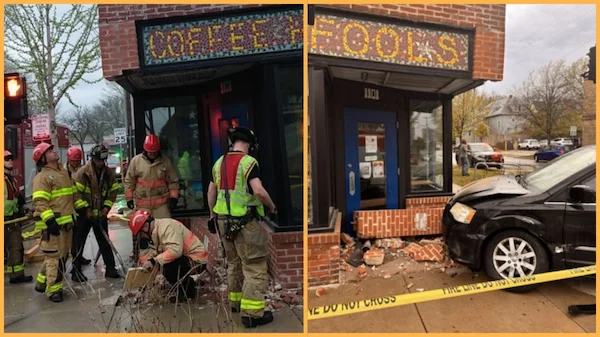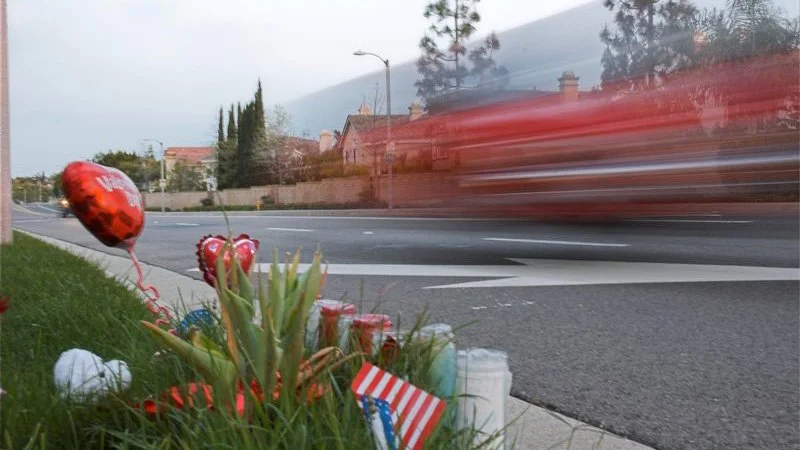Editor's Note: The challenges our cities face are growing, but so is the strength of this movement. Every story we share, every idea we spread, and every tool we build exists because people like you are committed to showing up. Your membership isn’t passive—it’s the momentum that makes change possible.

On May 27, 2025, two brothers in Gastonia, North Carolina, asked their dad if they could walk to the neighborhood Food Lion and Subway. It was less than ten minutes from their apartment.
Their dad hesitated. He and his wife are protective parents. But he agreed, on the condition that the boys stay on the phone with him the whole way. They made it to the store and back toward home without incident, until they reached West Hudson Boulevard.
Legend Jenkins, seven years old, stepped off the median into the road and was struck by an SUV. His father was still on the phone when it happened.
In the days that followed, the family’s grief deepened into something almost unimaginable. Two days after their son’s death, the district attorney charged both parents with involuntary manslaughter, set bail at $1.5 million each, and placed their surviving six children in the care of relatives.
I’ve seen pedestrian advocates respond to this case with outrage: “Kids should be able to walk to the store. Parents shouldn’t be criminalized for it.” I understand that impulse. I agree with the sentiment. But when I look at the location where Legend died, I can honestly tell you that nobody — child or adult — should be walking there.
West Hudson Boulevard is a high-speed arterial road with narrow sidewalks, a tiny median, and no truly safe crossings. Even a healthy, alert adult is taking their life in their hands by walking to that store. For a child, it’s playing the worst kind of roulette.
If this were a neighborhood where people regularly fired guns in the air, we would warn parents to keep their kids inside. A stray bullet may not be intentional, but it’s a predictable outcome of such an environment. On West Hudson Boulevard, the stray bullets are motor vehicles, and the result is the same: occasional, random, but entirely foreseeable deaths.
This wasn’t an “accident” in the sense of something random or unexpected. It was the statistically inevitable outcome of building a place where human life outside of a car has no real value in the design. Humans are, at best, a tiny afterthought. At worst, an annoyance.
The truth is, everyone who participates in building these places is complicit. Everyone. The planners who approved the land use. The engineers who designed the road geometry. The developers who built apartments near retail without safe connections. The retailers who designed parking-lot entrances instead of pedestrian routes. The public officials who sign off on all of it.
None of them intended for a child to die here. But if you build an environment that makes random deaths inevitable, the deaths will happen. There is a clear cause. Yet, by the composition and consensus of all involved, none of them can ever be held responsible. Ultimately, if everyone involved is responsible, nobody is responsible.
But society demands that someone be held accountable. So, when that inevitability came to pass, the system’s first response was to narrow the frame until blame could be pinned on someone. In this case, that was the parents. That same instinct often points the finger at the driver.
Yes, the driver is the one who struck Legend. Yes, the parents chose to let him walk. But that doesn’t explain why this road exists in a form that makes a tragedy like this certain to happen again and again and again.
I’ve spent quite a bit of time looking at this corridor. It is familiar in all the wrong ways. My diagnosis is that this is not a fixable situation, not in any meaningful sense. You can’t slap in a crosswalk, a flashing beacon, or a strip of sidewalk and call it safe. The entire nature of the road — its speed, its function, its relationship to surrounding land uses — is incompatible with the safe movement of people. That’s unsafe for those both inside and especially outside a motor vehicle.
And yet, we build more places just like this every day. Everyone knows better, but we do it anyway. When we do, we make an unspoken agreement: some number of people will die here every year. Some number of people will be sacrificed for the sake of a built environment that few professionals really believe is worthy of their energy, expertise, or even their attention.
We don’t say that part out loud because, if we did, it would force us to confront the morality of our choices. These choices are deeply immoral.
So we do the next best thing for our consciences: we blame the victims. We prosecute the parents, demonize the driver, or scold the pedestrian for “not being careful.” And in doing so, we avoid indicting the real culprit: the American development culture that produced this environment.
If we actually wanted to prevent the next Legend Jenkins, we would stop replicating places like West Hudson Boulevard. We would start building neighborhoods where a grocery store, a sandwich shop, and an apartment complex can exist within a short, safe walk of each other. And when tragedies happen, we would put the environment on trial, not the people who got caught in it.
There is no simple way to fix this street, but there is a way to start fixing the culture that builds places like this. The Strong Towns Crash Analysis Studio approach looks at every contributing factor in a crash — from sight lines to land use — and makes recommendations to address those shortcomings. It’s not about finding someone to punish, but about having a public conversation that says, “This place killed someone. Here’s why, and here’s how we stop it from happening again.”
Legend’s death was not a fluke. It was the expected outcome of a system working exactly as designed. Until we confront that reality — and change it — we’re just waiting for the next name to add to the list of unnecessary tragedies.





